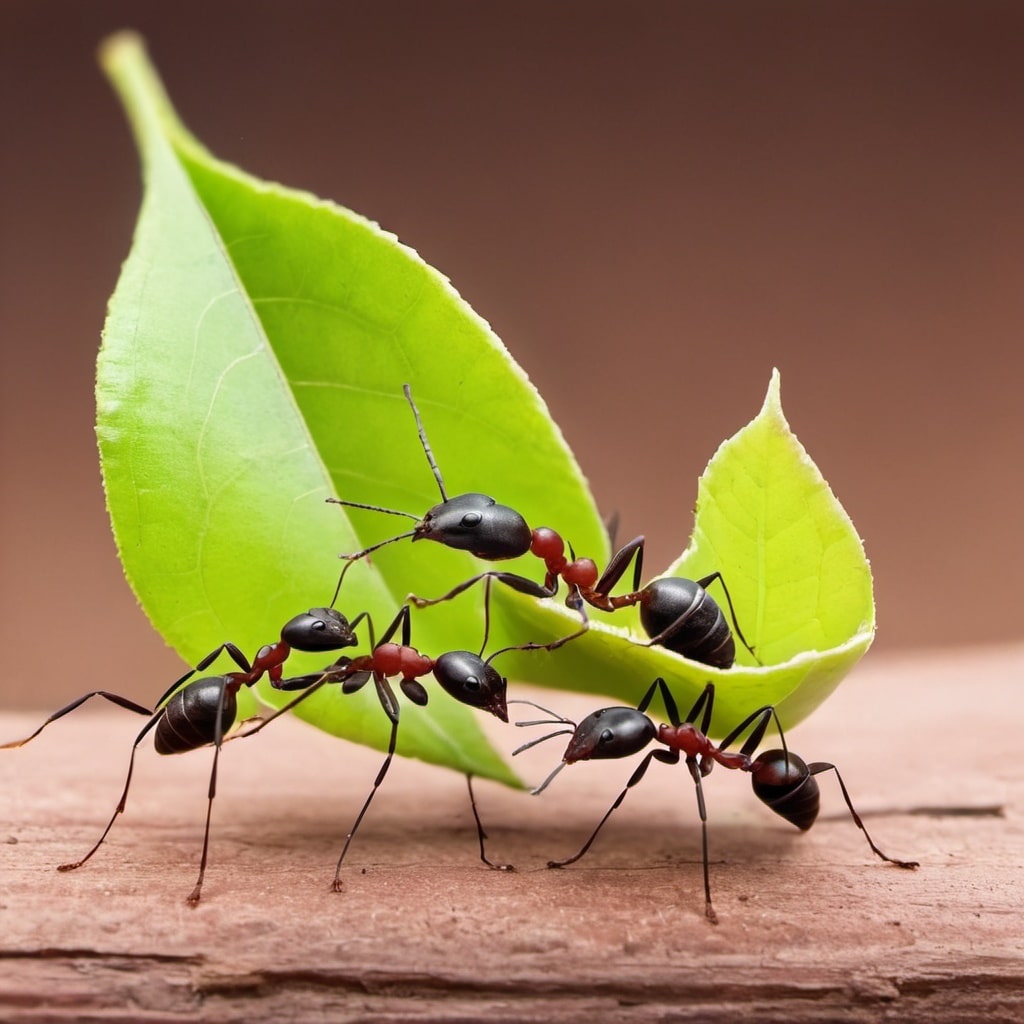In any given yard, you will find a vast ecosystem. This ecosystem is filled with tiny organisms fighting for their little piece of the pie, sometimes figuratively and sometimes literally. Of all of these little insects, the ants are the most organized. They hunt, gather food, feed their young, and even protect their nest without a word. But, how do ants communicate? Ants communicate to one another using pheromone signals that they pick up by smell.
Ants have a highly developed sense of smell that they use to communicate with one another. These insects are known as eusocial insects, or creatures that live in a colony and each play a unique role in day to day life. Each ant fits into her division of labor for the betterment of the entire colony.
THEIR AMAZING ABILITY TO SMELL
Ants use their antenna to smell. In fact, scientists have found that ants have more olfactory receptors, or cells dedicated to smell, than any other species of insect. While most insects have between 20 and 60 olfactory receptors, ants have around 400. Not all ants smelling abilities are created equally, though. Scientists have found that female ants have a lot more sensitive smelling ability than that of the males. This is because the males are few in number, and their only role in the colony is to fertilize the eggs. The workers, on the other hand are all female.
These workers are tasked with finding food, transporting it, feeding the larvae, and protecting the colony. These activities all require their sense of smell to navigate and complete. When an ant goes out foraging for food, it leaves a trail of pheromones for other ants to follow. If two ants find the same food, but one took a longer route, the longer route ant’s trail will have faded and be weaker. Ants will choose to follow the stronger scent. As these ants follow the pheromone trail, they leave their own trail, strengthening the scent, and convincing more ants to follow until the longer route has grown cold.
LIFECYCLE
Ants grow in a complete metamorphosis. This means that they go through four stages of growth. They start as eggs, laid by the queen. These eggs are fertilized by the male in the colony. Once the eggs hatch, a larvae emerges. The worker ants will feed this ant until it reaches adulthood. The larvae is a worm like form that will continue to grow as it is fed until it molts. It will loose its skin through the molting process a number of times before it reaches the next stage of development.
The next stage of development is the pupa. This stage is for rest and reorganization. It closely resembles the cocoon stage of a butterfly. But in the case of ants, the insect may have a cocoon or may not. The insect is white and resembles the adult except that the legs and antenna are folded against its body as it rests. Over time the body will darken, and the ant will come alive as an adult. Contact your Oklahoma exterminator for help.
THE ANT SUPER ORGANISM
Ants are organized in a eusocial system. This means that they each take a role in the day to day operations of the colony and work together. This super organism functions as a single unit. Scientists are unsure of how these insects know instinctively what to do. What is known, is that these insects use their super sensitive sense of smell to help them. Pheromones found on their cuticles help them to identify each other. They can tell if another ant is from their colony or a rival. They can also sense the role that the other ant will play. Your Tulsa exterminator company can give you an estimate to eliminate ants from your home.
Ants fall into one of three castes. The queens are much larger than the other ants, and are tasked with laying all the eggs in a single colony. This ant will spend her entire life laying eggs, sometimes up to a million in her lifetime. Females destined to become queens will have wings initially to find a mate outside of their original colony. They will find a male, also with wings, from another colony and go and create a new colony. Males are tasked with fertilizing the eggs, and usually only last a few weeks. The workers will do all of the other tasks required to build and maintain the colony.
HUNTING AND FARMING
Different ant species find food in a variety of ways. Many varieties of ants will hunt for their food. They will use their massive amount of numbers to overrun other insects, or even small mammals. These ants will overrun insects much larger than they are and tear them apart to feed to their larvae. Ants are often found attacking termite colonies and taking them back to their colony as food. Contact your local Oklahoma pest control company for assistance.
The leaf cutter ant will cut leaves to bring back to the colony. Here they will store it and allow a fungus to consume it. They in turn will feed upon the fungus that they have grown. Certain ants in South America will herd aphids and feed them, much like cattle. They do this because the aphids secrete honey dew, a sugary substance that the ants will consume.
REMOVING ANTS FROM YOUR HOME
If you find yourself with an ant problem in your home, there is help. Your Tulsa pest control company can eliminate them for you. Here at TermMax Pest Control, we can take care of all of your pest problems, including ants, at a reasonable cost. Contact us today, and we will get you a free estimate. We’re here to help!


